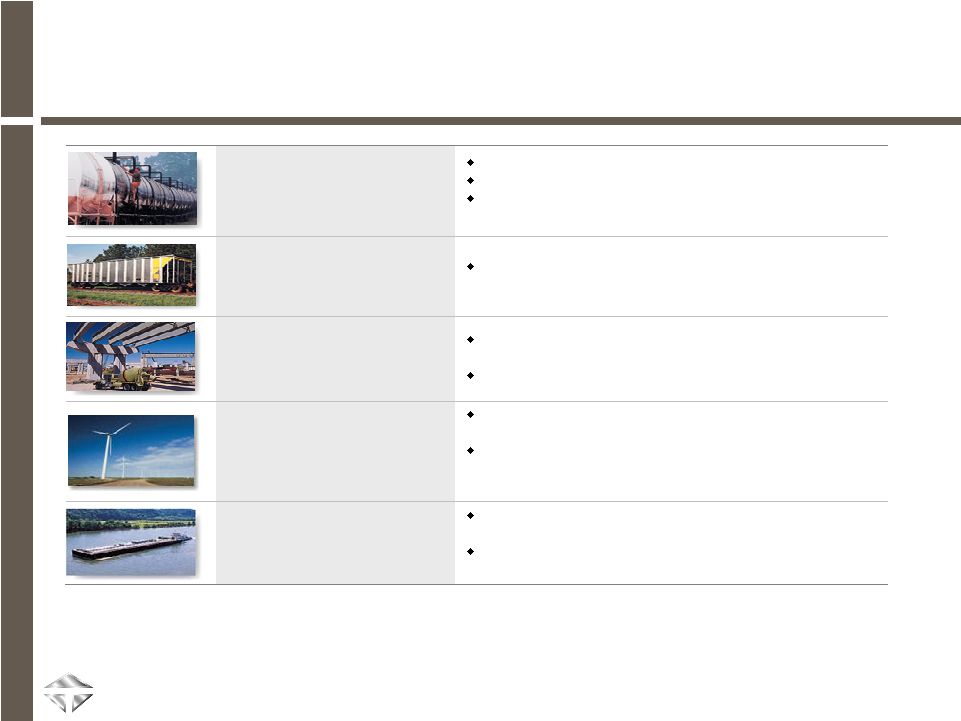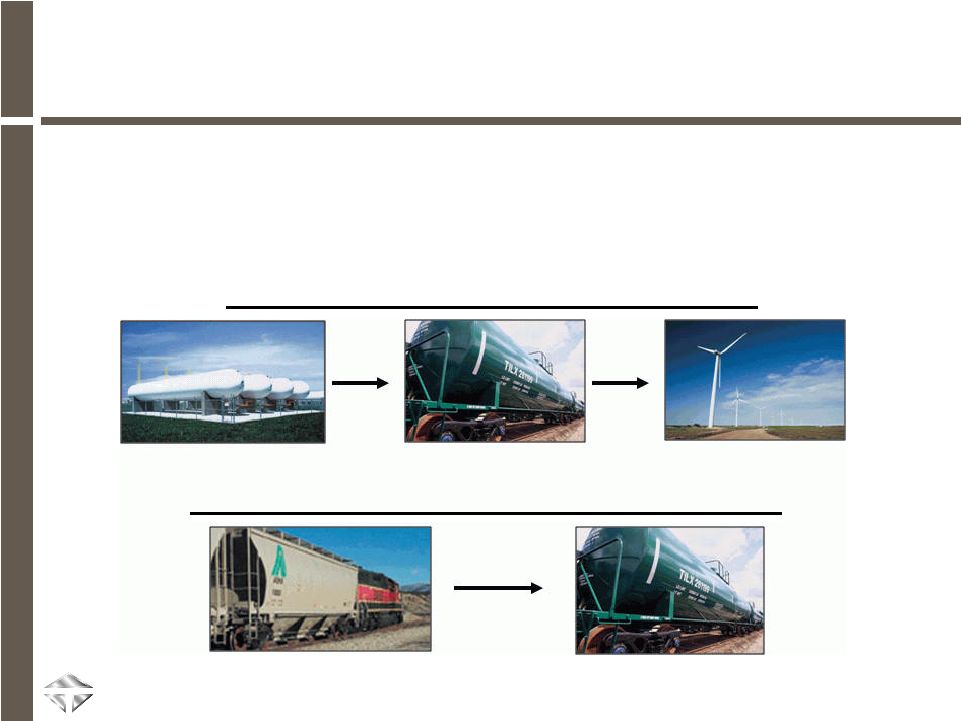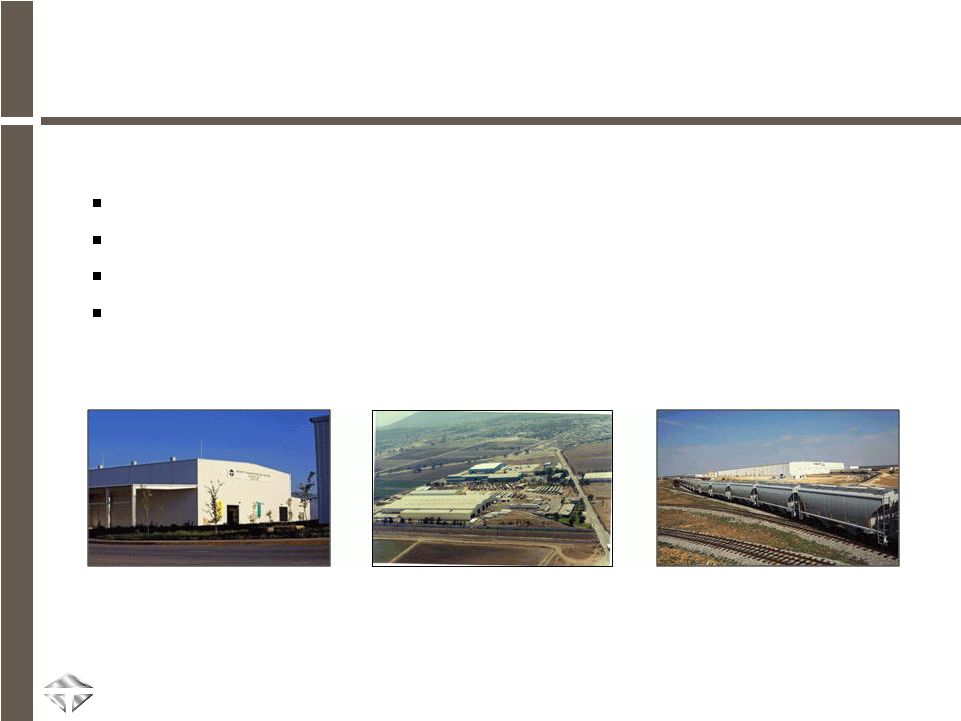Attached files
| file | filename |
|---|---|
| 8-K - FORM 8-K - TRINITY INDUSTRIES INC | d261153d8k.htm |
 Trinity Industries, Inc.
November 2011
Exhibit 99.1 |
 2
Forward Looking Statements
This presentation contains “forward looking statements”
as defined by the
Private Securities Litigation Reform Act of 1995 and includes statements as
to expectations, beliefs and future financial performance, or assumptions
underlying or concerning matters herein. These statements that are not
historical facts are forward looking. Readers are directed to Trinity’s Form
10-K and other SEC filings for a description of certain of the business
issues and risks, a change in any of which could cause actual results or
outcomes to differ materially from those expressed in the forward
looking statements.
Any forward looking statement speaks only as of the date on which such
statement is made. Trinity undertakes no obligation to update any forward
looking statement or statements to reflect events or circumstances after the
date on which such statement is made. |
 3
Trinity is a Multi-Industry Company
Rail Group
Leading manufacturer of railcars in North America
Manufacturer of railcar axles in North America
Manufacturer of railcar coupling devices in North
America
Railcar Leasing and
Management Services
Group
Leading provider of railcar leasing and management
services
Construction Products
Group
Leading full-line manufacturer of highway guardrail
and crash cushions in the United States
Leading supplier of concrete and aggregates in Texas
Energy Equipment Group
Leading manufacturer of structural wind towers in
North America
Leading producer of propane tanks, tank containers,
and tank heads for pressure and non-pressure
vessels in North America
Inland Barge Group
Leading manufacturer of inland barges in the United
States
Largest manufacturer of fiberglass covers for barges
in the United States
|
 4
Trinity’s Differentiating Strategies and Tactics
Trinity’s strategies and tactics are designed to
improve our
performance in all economic cycles
During the last decade, we enhanced our multi-industry
portfolio by:
Strategically growing the Leasing business to provide a solid
base of earnings and cash flows
Increasing our manufacturing efficiency while lowering our
manufacturing cost basis
Focusing on selectively building our backlogs
Investing in diversified businesses through organic growth
Making selective acquisitions to complement our portfolio
Trinity is uniquely positioned to generate significant profits
during an up cycle and manage through a severe down cycle
while building strength |
 5
Trinity Today
Leasing and Management Services
Expand relationships with end-users
of railcars
Introduce new products into the
market
Provide earnings and cash flow base
for Trinity
Consistently grow the business
Manufacturing Businesses
Maintain leadership positions
Utilize significant manufacturing
footprint in Southern U.S. and Mexico
Optimize operational flexibility
Generate continuous synergies
Trinity’s Multi-Industry Model |
 6
Trinity’s Revenues are More Diversified Than in the Past
LTM 09/11 Total Consolidated Revenue was $2.8 billion
Railcar Deliveries of 11,190
LTM 09/11 Total Consolidated Revenue was $2.8 billion
Railcar Deliveries of 11,190
FY 2000 Total Consolidated Revenue was $2.7 billion
Railcar Deliveries of 23,280
FY 2000 Total Consolidated Revenue was $2.7 billion
Railcar Deliveries of 23,280
60%
5%
21%
6%
8%
External Revenue Composition
FY 2000
Rail
Leasing
CPG
EEG
Barge
25%
20%
20%
16%
19%
External Revenue Composition
LTM 09/30/11
Rail
Leasing
CPG
EEG
Barge |
 7
Trinity is Well Positioned for All Economic Cycles
Trinity has staying power, continually building strength during a down cycle and
emerging with more opportunity for growth than when the cycle began
Seasoned
management
team
knows
how
to
assess
the
market, proactively
plan for cycles and address changes in economic conditions
Manufacturing
flexibility
is
a
core
competency,
and
when
combined
with
our
broad
product
offering
allows
us
to
pursue
a
wide
range
of
orders
Cost-effective
manufacturing
footprint
in
the
Southern
United
States
and
Mexico
is
a
competitive
advantage
for
many
of
our
product
lines
Shared
synergies
across
business
lines
provide
unique
opportunities
Trinity’s
lease
fleet
of
approximately
70,000
railcars
(including
TRIP)
provides a
strong strategic connection to our customers, as well as a long-term stream of
profits and cash flows
Strong
liquidity
position
of
approximately
$810
million
and
solid
balance sheet |
 8
(1)
Sources: Historical data as reported per the Railway Supply Institute.
2011-2015 projections are an average of estimates provided by Global Insight (08/11) and
Economic Planning Associates, Inc. (10/11) and are provided as a point of
reference. Railcar
Deliveries
(1959
–
2015P)
Projections based on Third-Party estimates
(1)
Railcar Cycles Require Proactive Planning
0
10,000
20,000
30,000
40,000
50,000
60,000
70,000
80,000
90,000
100,000 |
 9
Trinity’s Manufacturing Flexibility is a Differentiator
Trinity’s manufacturing flexibility enhances our opportunistic approach
–
We quickly respond to market changes and customer needs
–
Our resources are directed toward highest and best use
Manufacturing flexibility across business lines
Manufacturing flexibility across broad product lines |
 10
Trinity Has an Excellent Competitive Position in Mexico
More than five decades of in-country operating experience
Trinity’s manufacturing capacity in Mexico continues to grow
Provides benefits across multiple product lines
Strong
logistics
network
in
place
–
approximately
990
truckloads
crossing the border per month at the end of September 2011
|
 11
Trinity’s Companies Have Continuous Synergistic
Connections
Trinity’s businesses place a high priority on collaborating with each other
to continuously generate synergies that provide competitive benefits:
INTERNALLY
GENERATED
SYNERGIES
INTERNALLY
GENERATED
SYNERGIES
Shared Best Practices
in Manufacturing
Technologies
Internal Sourcing of
Components & Sub-
Assemblies
Maximized
Plant
Efficiencies
Centralized
Cost Savings
Optimization of Low
Cost Facilities |
 12
Trinity’s Railcar Leasing Company Provides Stability
The growth of our railcar leasing business over the last decade has
produced a consistent revenue and earnings base
Trinity Industries Leasing Company (TILC), our wholly-owned leasing
subsidiary, provides strategic benefits to our railcar manufacturing
businesses in addition to its strong financial performance
–
In LTM 9/30/11, we added $215 million (net) of railcars to our TILC
fleet, representing more than 5% year-over-year growth in units
TILC also owns a 57% ownership interest in TRIP, a fleet of 14,600
railcars, which brings its total owned and managed fleet to approximately
70,000 railcars
We have been very successful in renewing or remarketing cars in our
fleet, which is reflected in our high utilization rates
–
TILC lease fleet utilization was 99.4% at September 30, 2011
–
TRIP lease fleet utilization was 99.9% at September 30, 2011
Industry trends continue to show a large portion of new railcar orders are
for leases, and we are positioned to take advantage of those orders
|
 13
Trinity’s Railcar Lease Fleet has Grown Rapidly
8,700 cars
8,700 cars
69,045 cars
69,045 cars
We have built a large fleet of young railcars with long-term leases
–
Our lease fleet provided an important base of revenues and earnings
during the last downturn helping Trinity maintain profitability
3/10
3/10
10,000
20,000
30,000
40,000
50,000
60,000
70,000
3/00
12/01
12/02
12/03
12/04
12/05
12/06
12/07
12/08
12/09
12/10
9/11
TILC
TRIP
- |
 14
Trinity’s Liquidity Position is Strong
As
of
September
30,
2011:
Unrestricted Cash and Cash Equivalents of $272.8 million
Corporate Revolver availability of $342.4 million
TILC Leasing Warehouse availability of $194.3 million
Total available liquidity of approximately $810 million
Corporate Revolver
$425 million facility
Matures October, 2016
No borrowings at 9/30/11
$82.6 million in Letters of Credit
TILC Leasing Warehouse Facility
$475 million facility
Matures February, 2013
$280.7 million in borrowings at 9/30/11 |
 15
Trinity’s Balance Sheet Remains Solid
As of September 30, 2011:
Unrestricted Cash and Cash Equivalents of $272.8 million
Manufacturing/Corporate debt:
–
Subordinated Convertible Notes of $450 million; first call/put in 2018
Leasing debt (including TRIP):
–
Warehouse borrowings of $280.7 million; long-term financings of $2.3 billion
including $913 million from TRIP (of which $2.2 billion in financings are
non-recourse to Trinity) –
Leasing assets have a net book value of $4.3 billion including TRIP
–
Total leasing debt to total equipment on lease of 61.5% (55.0% excluding TRIP);
significant amount of unencumbered assets available for financing
In July, completed the successful refinancing of TRIP’s $1.0 billion
warehouse loan; refinancing executed on a non-recourse basis and
included: –
$857 million of medium and long term secured debt at an initial coupon of
5.4% –
$175 million of three-year notes at a cash interest rate of 8% (yield step ups
apply) –
Trinity purchased a $112 million participation in the notes
|
 16
Trinity’s Recent Operating Results
$1.42
$2.64
$3.55
$3.47
$0.85
$1.29
$1.33
$0.00
$0.50
$1.00
$1.50
$2.00
$2.50
$3.00
$3.50
$4.00
2005
2006
2007
2008
2009
2010(3)
LTM
09/11
LTM
as
of
September
30,
2011:
Revenues increased 37.1% from $2.0 billion to
$2.8 billion
Operating profit increased by $58.6mm to
$215.1mm
(1)
EBITDA increased 17.9% from $466.3mm to
$549.8mm
Earnings from continuing operations of $1.29
per diluted share
($mm)
(3)
(3)
(3)
(2)
(2)
Trinity’s
Earnings
Summary
FY
2005
–
LTM
9/30/11
Trinity’s
EBITDA
Summary
FY
2005
–
LTM
9/30/11
(4)
$550
$295
$500
$658
$462
$704
$488
19.6%
17.9%
18.1%
17.2%
15.5%
10.9%
22.3%
$0
$100
$200
$300
$400
$500
$600
$700
2005
2006
2007
2008
2009
2010
LTM
09/11
(1)
Operating Profit includes Leasing External Interest Expense
(2)
Excludes $325mm pre-tax impact of impairment of Goodwill
(3)
Effective January 1, 2010, Trinity adopted a new accounting pronouncement requiring the
inclusion of the financial position and results of operations of TRIP Rail
Holdings and subsidiary in the consolidated financial statements of
Trinity. Accordingly, the operating results of Trinity include TRIP Rail
Holdings starting with the fiscal year ended December 31,
2010. Please refer to Note 1 in the Company’s Form 10-K for the fiscal year
ended December 31, 2010 for further discussion.
(4)
See Note in Appendix pg. 24 for Reconciliation of EBITDA |
 Appendix:
Operating Business Summaries |
 18
Trinity shipments totaled approximately 11,190 railcars
representing 29% of industry shipments during LTM
9/30/11
Trinity orders totaled approximately 34,210 railcars
representing 40% of the Industry total during LTM
9/30/11
Trinity’s order backlog was approximately 27,885
railcars representing 43% of industry backlog as of
9/30/11
$135.0
$253.9
$347.6
$247.7
$51.7
$1.5
($30.9)
5.0%
0.3%
14.6%
9.7%
11.9%
7.4%
-3.5%
($50)
$0
$50
$100
$150
$200
$250
$300
$350
$400
2005
2006
2007
2008
2009
2010
LTM 09/11
Rail Group
Leading manufacturer of railcars in North
America
Manufacturer of railcar axles and coupling
devices in North America
Focus on new and updated designs
Centralized sourcing provides cost savings
Streamlined manufacturing efficiencies
Networking of customers between railcar
sales and railcar leasing
•
Approximately 37% of the North American
fleet is more than 25 years old
(1)
Before eliminations for Leasing and Intercompany Profit
(2)
Excludes $325mm charge for impairment of Goodwill
($mm)
(2)
(2)
Rail Group Highlights
Rail
Group
Historical
Operating
Profit/(Loss)
&
Margin
(1) |
 19
Railcar Leasing and Management Services Group
Leading provider of comprehensive railcar leasing
and management services
Single point of contact for equipment and services
Strengthens relationship with end-user of railcar
Marketed with railcar sales activities as TrinityRail®
Strategic Position
Operating Benefits
Financial Results
Leasing complements product offering (one-stop
shopping)
Provides Trinity’s rail customers option to purchase
or lease
Ideal method for introduction of new products
Assists in balancing and extending production lines
Minimizes administrative issues
Strategic fleet sales take advantage of market
conditions
Leasing provides attractive return on investment
Minimizes cyclical exposure to company
Revenue and cash flow diversification for Trinity
($mm)
Note: Beginning in Q1 2010, TRIP Revenues and OP were consolidated with the Leasing
Group Note: Beginning in Q1 2010, TRIP Revenues and OP were consolidated with
the Leasing Group $235.3
$158.9
$161.2
$106.5
$55.8
$149.0
$207.0
42.9%
41.6%
28.4%
27.4%
35.1%
25.5%
29.7%
$0
$50
$100
$150
$200
$250
$300
2005
2006
2007
2008
2009
2010
LTM
09/11
Operations
Car Sales
Leasing
Group
TRIP
(1)
Fleet Size
54,445
14,600
Average Age (in years)
6.4
4.1
Average Remaining Lease Term
3.5
3.3
Utilization Rate
99.4%
99.9%
(1) TRIP Holdings is a majority-owned subsidiary of TILC that was formed in
2007 to provide railcar leasing and management services in North
America. TILC’s ownership interest in TRIP Holdings is currently
57.1%. TILC manages and services the railcars for TRIP.
(1) TRIP Holdings is a majority-owned subsidiary of TILC that was formed in
2007 to provide railcar leasing and management services in North
America. TILC’s ownership interest in TRIP Holdings is currently
57.1%. TILC manages and services the railcars for TRIP.
Trinity Leasing’s capabilities provide the following advantages:
Leasing & Mgmt Services Historical Operating Profit & Margin
Fleet Statistics (as of September 30, 2011) |
 20
$15.7
$44.5
$72.6
$119.2
$125.2
$69.0
$83.6
15.9%
16.3%
23.7%
19.1%
14.7%
12.0%
6.5%
$0
$30
$60
$90
$120
$150
2005
2006
2007
2008
2009
2010
LTM 09/11
Revenues up 26.4% in LTM 9/30/11 vs. LTM 9/30/10
Profitability remains high -
Operating Profit margins increased
from 6.5% in FY 2005 to 15.9% during LTM 9/30/11
Trinity backlog was $564mm at 9/30/11
4,120 out of 17,910 hopper barges, or approximately 23%, are
21+ years old
1,060 out of 3,010 tank barges, or approximately 35%, are
21+ years old
Inland Barge Group
Tank Barges
Hopper Barges
Transports grain & coal
Transports liquids
($mm)
Leading manufacturer of barges that transport
goods through U.S. inland waterways
Largest U.S. manufacturer of fiberglass barge
covers
Multiple barge manufacturing facilities on
inland waterways enable rapid delivery
Barge transportation has a cost advantage in
high-cost fuel environments
Over the past 10 years, 29% more barges
were scrapped vs. built
9,674
scrapped
vs.
7,495
built
from
2000
-
2010
Leading manufacturer of barges that transport
goods through U.S. inland waterways
Largest U.S. manufacturer of fiberglass barge
covers
Multiple barge manufacturing facilities on
inland waterways enable rapid delivery
Barge transportation has a cost advantage in
high-cost fuel environments
Over the past 10 years, 29% more barges
were scrapped vs. built
9,674
scrapped
vs.
7,495
built
from
2000
-
2010
(1)
(1) Operating Profit includes a $5.1mm net gain as a result of flood damage to the
Tennessee barge plant (1) Operating Profit includes a $5.1mm net gain as a
result of flood damage to the Tennessee barge plant (2)
(2) Operating
Profit
includes
a
$(2.5)mm
net
loss
as
a
result
of
flood
damage
to
the
Tennessee
and
Missouri
barge plants
(2) Operating
Profit
includes
a
$(2.5)mm
net
loss
as
a
result
of
flood
damage
to
the
Tennessee
and
Missouri
barge plants
Inland Barge Group Highlights
Inland Barge Group Historical Operating Profit & Margin
Replacement demand driver (as of 12/31/10): |
 Concrete &
Aggregates
35%
Other
4%
Highway
Products
61%
21
$55.9
$62.8
$72.4
$64.2
$47.4
$48.9
$32.6
8.5%
8.2%
6.1%
8.7%
9.9%
9.0%
9.0%
$0
$10
$20
$30
$40
$50
$60
$70
$80
2005
2006
2007
2008
2009
2010
LTM 09/11
Revenues increased 2.1% LTM 9/30/11 vs. LTM 9/30/10
Operating Profit increased 5.8% LTM 9/30/11 vs. LTM
9/30/10
Producer of Highway products for North America and
other international markets
Positioned in Texas with Concrete and Aggregates
Consistent contributor to cash flow
Construction Products Group
Leading manufacturer of highway guardrail and
crash cushions in the United States; plus a line of
proprietary products including guardrail end
treatments and cable barrier guardrail systems
Leading Texas producer of concrete and
aggregates
Diversified exposure to commercial, residential,
industrial, and highway markets
Business has grown organically and through
acquisitions
Demand tied to construction projects and federal
funding
($mm)
Construction Products Group Highlights
LTM 9/30/11 Revenue Mix
Construction Products Group Historical Operating Profit & Margin
|
 22
$31.9
$45.7
$50.1
$100.3
$35.1
$15.0
$73.8
3.3%
8.4%
14.5%
13.6%
15.9%
11.5%
13.6%
$0
$10
$20
$30
$40
$50
$60
$70
$80
$90
$100
$110
2005
2006
2007
2008
2009
2010
LTM 9/11
Structural
Wind
Towers:
Revenue of $242.4mm in LTM 9/30/11
Trinity’s backlog as of 9/30/11 was $930 million
Plants are strategically located along the central corridor where
the majority of wind farms are installed
Tank
Containers:
Consistent and mature business
Trinity has taken cost out of the business
–
Improved processes
–
Elimination of non-profitable products
–
Consolidated North American operations
Energy Equipment Group
Leading North American producer in structural
wind tower business
Leading producer of propane tanks, tank
containers, and tank heads for pressure and non-
pressure vessels in North America
Low-cost operator with primary tank container
production in Mexico facilities
Synergies among products across multiple Trinity
business groups
($mm)
Energy Equipment Group Highlights
Energy Equipment Group Historical Operating Profit |
 2005
2006
2007
2008
2009
2010
LTM 9/11
Income (loss) from continuing operations
$110.5
$212.6
$289.8
$282.4
($137.5)
$75.6
$107.5
Add:
Interest expense
42.2
68.7
84.5
109.4
123.2
182.1
182.0
Provision/(Benefit) for income taxes
65.6
131.3
165.1
171.4
(9.4)
40.9
69.7
Depreciation & amortization expense
76.2
87.6
118.9
140.3
160.8
189.6
190.6
Goodwill impairment
-
-
-
-
325.0
-
-
Earnings from continuing operations
before interest expense, income
taxes, and depreciation and
amortization expense
$294.5
$500.2
$658.3
$703.5
$462.1
$488.2
$549.8
Reconciliation of EBITDA
(1) Includes results of operations related to TRIP starting January 1, 2010
(1) Includes results of operations related to TRIP starting January 1, 2010
23
(1)
(1)
(1)
(1)
“EBITDA is defined as Income (loss) from continuing operations plus interest
expense, income taxes, and depreciation and amortization expense including
goodwill impairment charges. EBITDA is not a calculation based on generally accepted accounting principles. The
amounts included in the EBITDA calculation, however, are derived from amounts included
in the historical statements of operations data as adjusted for the adoption of
accounting pronouncements. In addition, EBITDA should not be considered as an alternative to net income or
operating income as an indicator of our operating performance, or as an alternative to
operating cash flows as a measure of liquidity. We have reported EBITDA
because we regularly review EBITDA as a measure of our ability to incur and service debt. In addition, we believe our
debt holders utilize and analyze our EBITDA for similar purposes. We also believe
EBITDA assists investors in comparing a company’s performance on a
consistent basis without regard to depreciation and amortization, which can vary significantly depending upon many
factors. However, the EBITDA measure presented in this press release may not
always be comparable to similarly titled measures by other companies due to
differences in the components of the calculation.
|
